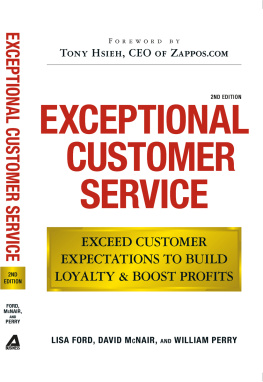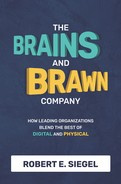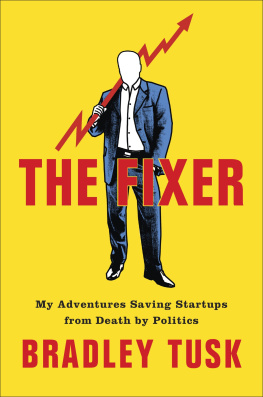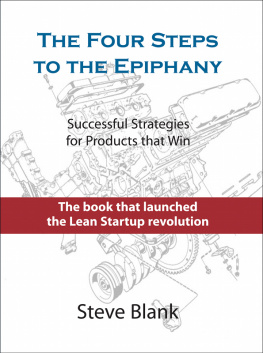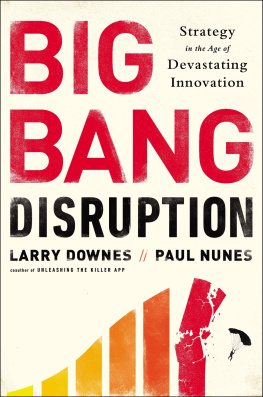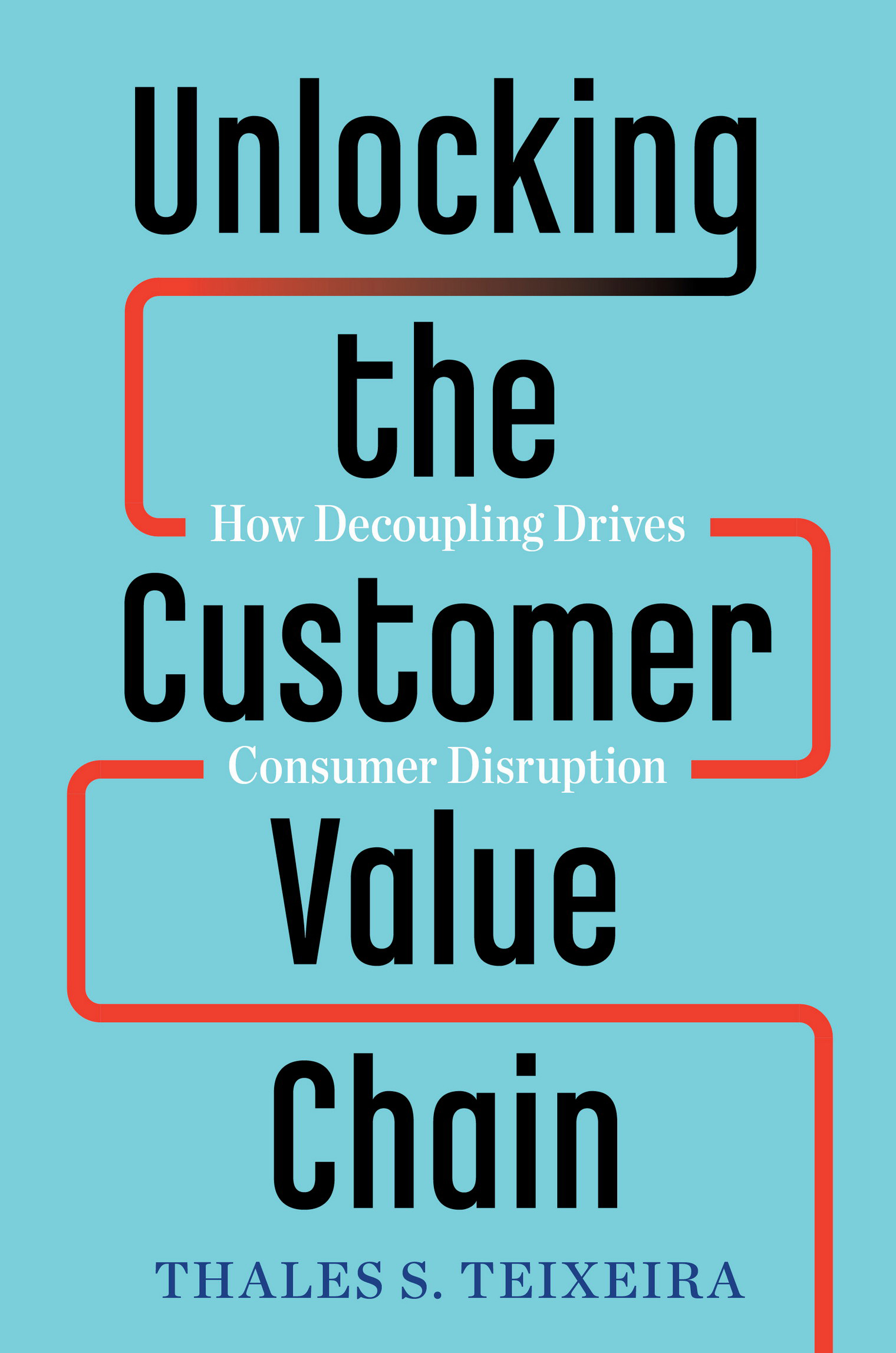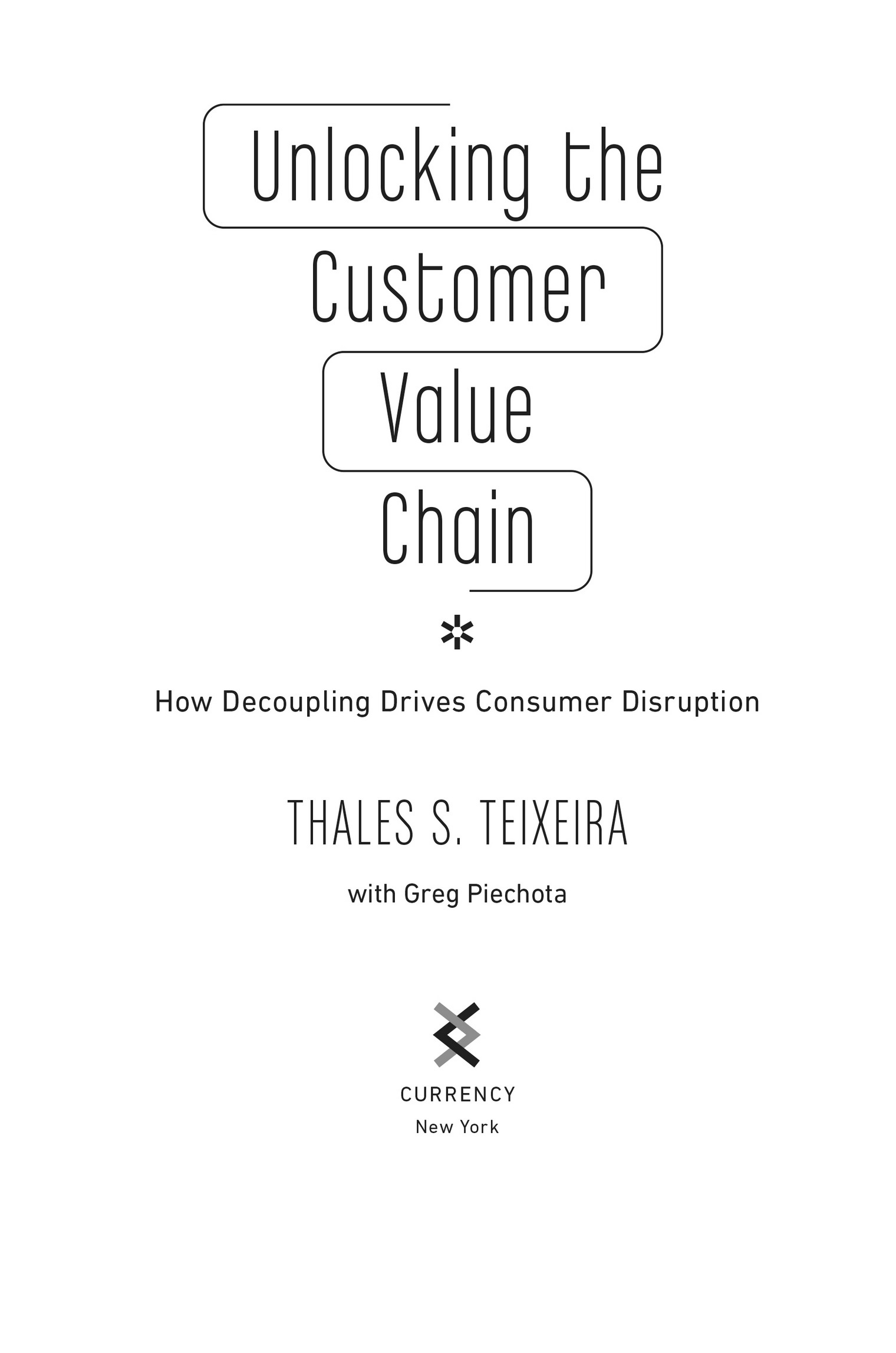Copyright 2019 by Thales S. Teixeira
All rights reserved.
Published in the United States by Currency, an imprint of the Crown Publishing Group, a division of Penguin Random House LLC, New York.
CURRENCY and its colophon are trademarks of Penguin Random House LLC.
Names: Teixeira, Thales S., author. | Piechota, Greg.
Title: Unlocking the customer value chain : how decoupling drives consumer disruption / Thales S. Teixeira, Greg Piechota.
Description: 1 Edition. | New York : Currency, 2019. | Includes bibliographical references and index.
Identifiers: LCCN 2018027655 | ISBN 9781524763084 (hardback) | ISBN 9781524763091 (eISBN)
Subjects: LCSH: Customer relations. | Consumer satisfaction. | Marketing. | BISAC: BUSINESS & ECONOMICS / Management. | BUSINESS & ECONOMICS / Entrepreneurship. | BUSINESS & ECONOMICS / Leadership.
Origins matter. To my parents, Joao Batista and Assunta Teixeira. And to Iva, my wife, Kalina, my daughter, and Marley, my son: you are the three great waves of disruption in my life. I love you all!
INTRODUCTION
Borders was once one of the largest bookstores in the United States. But in 2011, following the disruption of its business model by Amazon, the company went bankrupt. According to CEO Mike Edwards, the experience of closing Borders was humbling. Principles that Edwards had learned over an entire career suddenly didnt work due to what he described as a digital tsunami.
Nokia, once the global leader in mobile phones, had to sell itself in 2013 to avoid bankruptcy, also a victim of digital disruption. Its CEO, Stephen Elop, was brutally honest in acknowledging that he didnt know what he didnt know. In a tearful interview that has since become famous, Elop claimed, We didnt do anything wrong, but somehow we lost.
More recently, in 2017, J. Crew, once one of the worlds most fashionable clothing companies, had to close many stores after multiple quarters of declining same-store sales. Its founder and ousted CEO, Mickey Drexler, acknowledged that he hadnt known how to deal with the pace of digital change. If I could go back 10 years, he said, I might have done some things earlier.
But what, exactly? Edwards, Elop, and Drexler never offered any alternatives to their failed strategies. Nor have many other executives who have seen their businesses implode.
Today, digital disruption affects every industry, geography, and market, and it isnt going away. Rather than a single, pivotal event, disruption has become a permanent condition of modern markets. New entrants. New technologies. New investors. New business models. How should large, established companies respond?
Innovation Alone Is Not the Answer
Innovation, many leaders say. If new and more innovative companies are disrupting their businesses, then leaders of incumbents need to out-innovate these competitors. The argument seems sound, and it enjoys strong support. In 1997, Clayton Christensen published The Innovators Dilemma: When New Technologies Cause Great Firms to Fail, which roughly equated disruption with innovation. When a specific type of innovation existed (what in this book Christenson calls disruptive technology and what in his subsequent books he calls disruptive companies, strategies, and products), so, too, did the risk of market disruption exist. Where this innovation didnt exist, neither did disruption. Inspired by Christensen, and influenced by an avalanche of other books on innovation, business leaders have dedicated massive amounts of time and resources to helping their companies become more innovative. If certain new technologies adopted by competitors cause great firms to fail, as Christensens subtitle suggests, then it makes sense for incumbents to respond by investing in new disruptive innovations themselves. But what if innovation and disruption are not so tightly connected?
Technology Is Not Whats Disrupting Most Markets
In particular, I argue in Unlocking the Customer Value Chain that new technology isnt driving most disruption today. Consumers are. And that in turn means incumbents require a different kind of innovation in order to thrivenot technological innovation, but a transformation in business models. A business model describes how a company workshow it creates value and to whom; how it captures value and from whom. Innovating your business model requires a deep knowledge of customers. You must understand what your customers want, and in particular, the main steps or activities they undertake in order to satisfy their desires. You need to understand their value chain.
Once you learn to look at markets from the customers perspective, a whole new wave of digital disruption opens up for you, one spanning industries such as retailing, telecom, entertainment, consumer goods, industrials, services, transportation, and more. Traditional companies in these industries have enabled customers to conduct most if not all consumption activities in partnership with them as customers go about acquiring goods and services. These companies bind together as a single chain all the steps that consumers undertake in order to acquire products and services. In todays new wave of disruption, upstart firms are breaking apart these chains, offering customers the chance to fulfill just one or a few activities with them, and leaving incumbents to fulfill the rest. I call this process of breaking apart the chain of consumption decoupling. Startups decouple to gain a foothold in the market, and they grow by offering to fill a specific activity for customerswhat I call coupling. Both the initial decoupling and the subsequent coupling allow startups to quickly steal a substantial amount of market share at incumbents expense. In short, the startups become disruptors.
(De)couplers Are Changing the Game
Unlocking the Customer Value Chain will examine many specific examples of decoupling. Amazon, for instance, initially broke apart the series of activities customers typically fulfill in order to shop for durable goods. Customers could purchase goods from Amazon, while turning to traditional retailers as showcases for discovering products and educating themselves about them. Netflix broke apart the chain of activities by which customers consumed video entertainment, offering only the delivery of content, while leaving it to telecom operators to provide investment-intensive infrastructure for customers to connect their households to the internet. Facebook targets and distributes news. But it doesnt produce the news itselftraditional news organizations and users do. These disruptive companies, and many lesser-known firms that well analyze, all deploy innovative technologies, but they use technology to enable their business models. The business models themselves represent the true innovations.
The present wave of customer-driven innovation in business models is fundamentally new. It follows that incumbents seeking to master it should embrace a new strategic framework. While frameworks such as SWOT analysis, game theory, and even Michael Porters Five Forces proved extremely useful for companies in the 1980s, 1990s, and early 2000s, the nature of competition has changed. Most industries used to have only two or at most a few major global players. Today industries contain many competitors, mostly small ones acting globally. Game theory loses much of its value when one larger, more predictable player has to play a strategic chess match with not one, not two, but hundreds and in some cases thousands of small, unpredictable players. Other traditional approaches to strategy are similarly ill-equipped to handle present-day realities. This book aims to complement these established frameworks.


